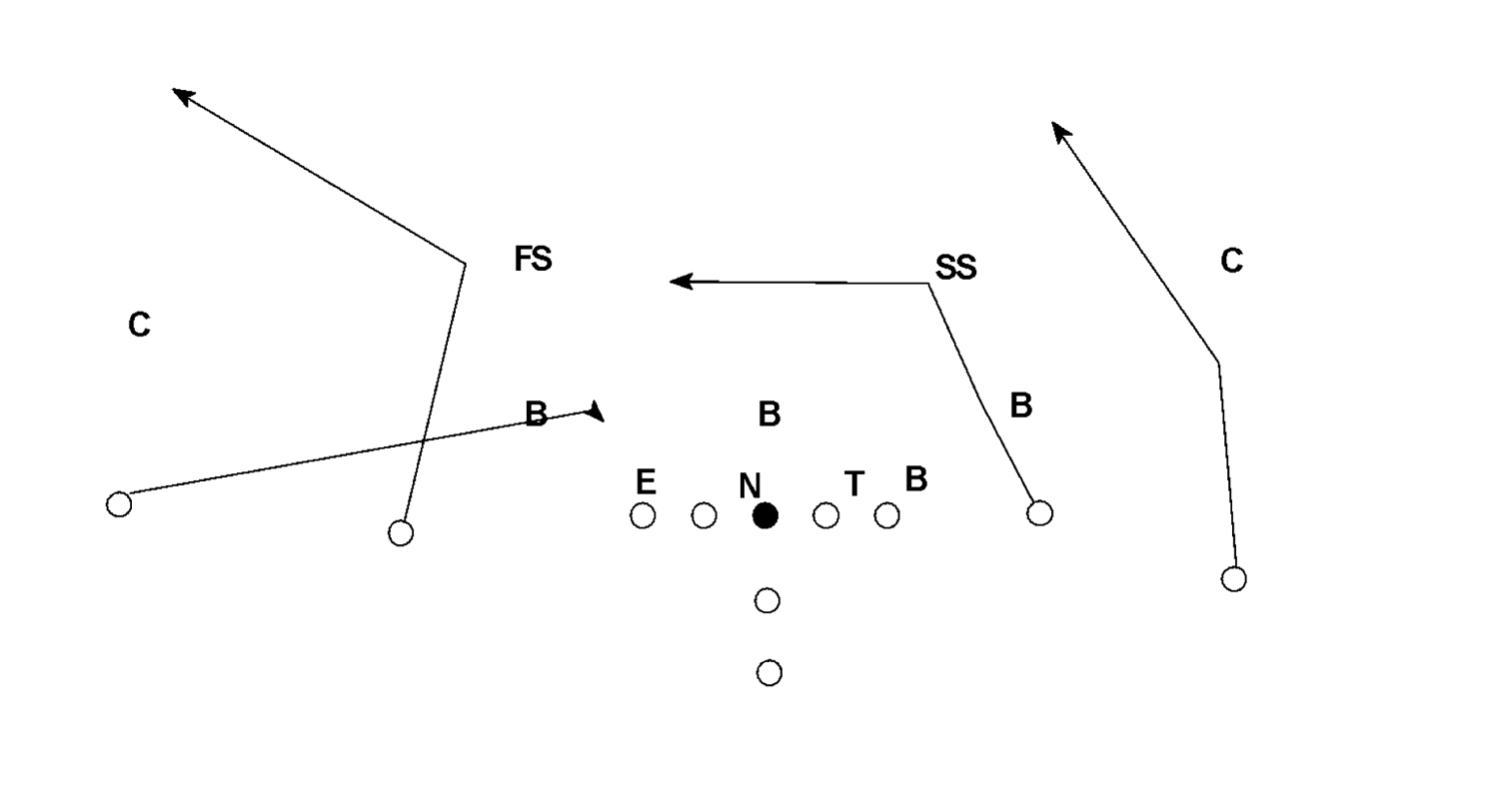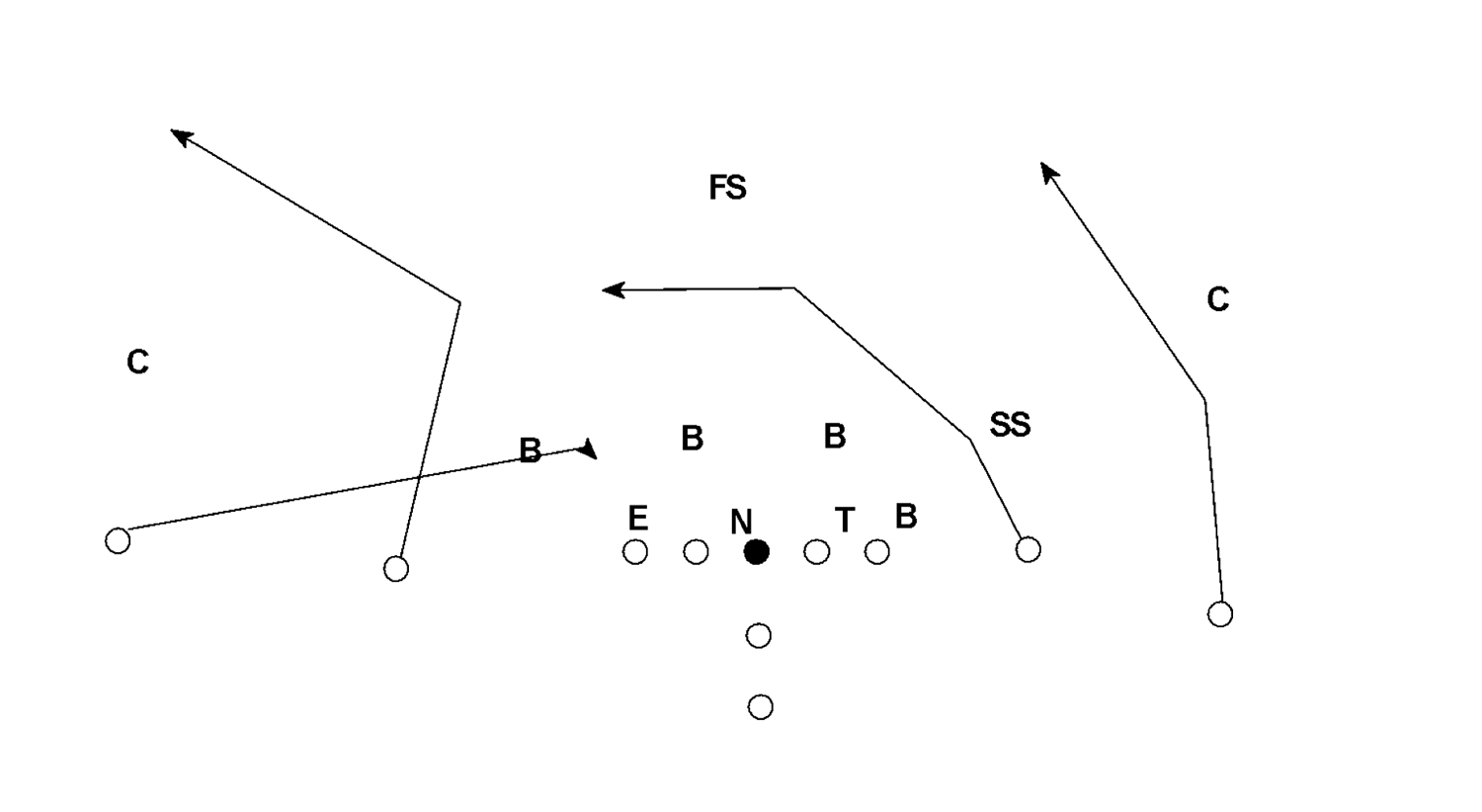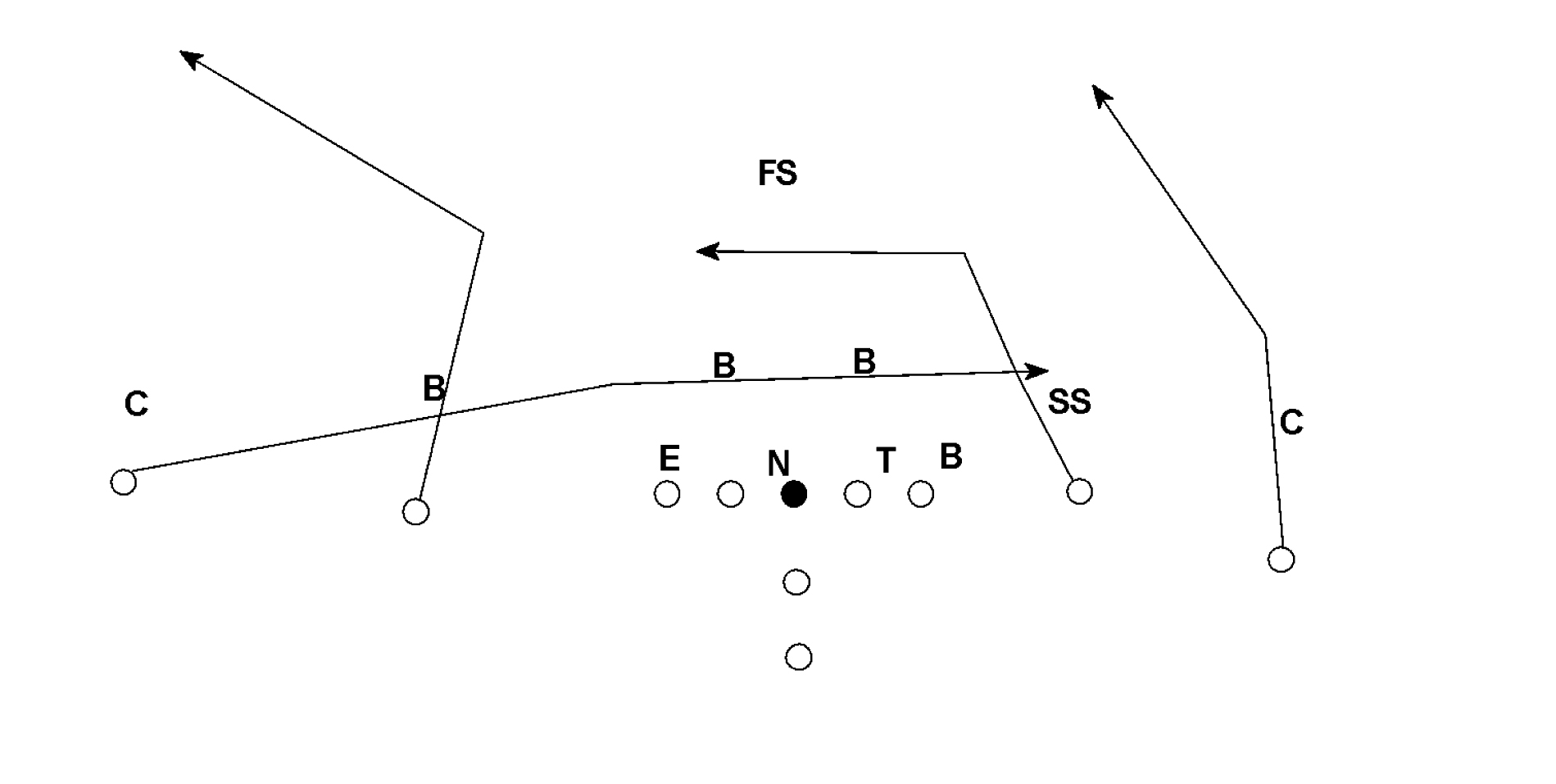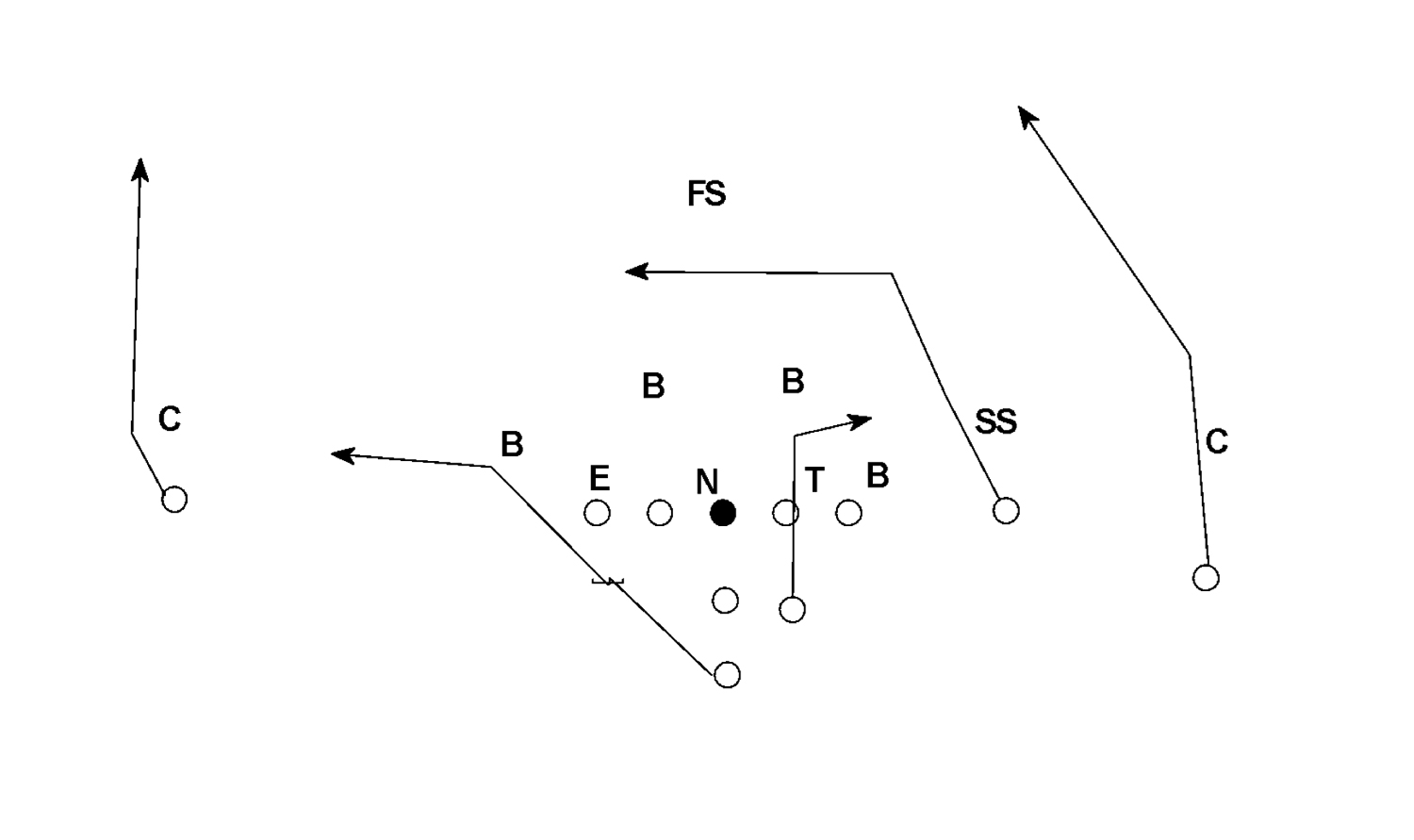Article CategoriesAFM Magazine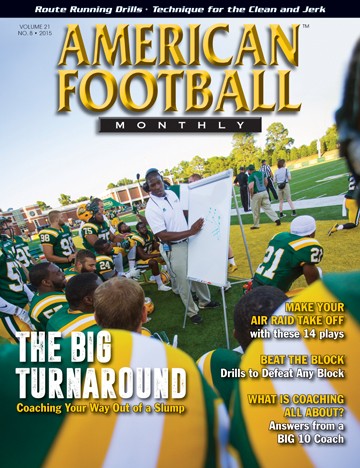
|
Installation Report: The Vertical Passing Gameby: Bryon HamiltonOffensive Coordinator Shasta College © More from this issue It’s great to be back! I’ve always enjoyed sharing ideas with football coaches throughout the country and there is not a better place to do that than here at American Football Monthly. This article is the first in a series that will focus on the introduction and installation of a specific offensive play concept. My intention is to share ideas that have helped me over the years and specifics that will hopefully give insight into the actual “nuts and bolts” of each concept. These concepts are ones that I have learned, used, and developed over my 23 years as an offensive coordinator at both the high school and collegiate levels. Currently, I am the offensive coordinator at Shasta College in Redding, California. I was hired at Shasta in 2013. In 2013, our team set a school record by averaging 42 points per game; in 2014 we improved that average to 47 points per game. I am excited to have an opportunity to share some of the concepts that have allowed our offense to achieve success. The first concept that I would like to introduce is the “8” concept. This concept is part of the vertical package in our passing game and it utilizes the 8 route as the primary vertical threat. The “8” comes from the number assigned to the post route on our passing tree. Many passing tree’s designate the 8 as the post route and, if used properly, it can be one of the most potent routes in an offense’s arsenal. The following dig, drag, post concept is one way that I use the post route to vertically attack a defense. The 8 route concept can be run from any formation. However, I prefer running it from a 2 x 2 (double slot) single back set or a 2 x 1 (slot on one side with a single WR on the other side) two back set. The single back set allows for more route runners and thus more options, but the formation usually induces a two high coverage scheme and can be less secure in protection. The two back set allows for additional options in protection and often induces single-safety coverage schemes. In this formation, however, a WR is replaced by a RB and usually that means one less vertical passing threat on the field. The primary route is the post (8) route. This route traditionally is a vertical route with an inward break toward the goal post. In the concept that I am presenting, I teach the designated outside WR to achieve an inside release on the defensive back, push vertically for 10-12 yards and then break inside on an angle that splits the nearest high defender and the outside defender (usually the defensive back). This is a key teaching point as the 8 route in this concept often converts to a “skinny post” that aims at the nearest upright of the goal post. In this concept, if the designated WR encounters an inside leverage press defender, he can convert the 8 to an outside release fade or vertical route (9 route).
The route assigned to the slot WR on the primary side is a key route. We call the route an “aggressive high cross.” The WR’s job is to attack the inside number of the nearest high defender to a depth of 12-14 yards and then break flat to the opposite hash. The purpose of the route is to get the attention of the safety and push the route to his break point rule - usually around 12 yards. This route often causes the safety to hesitate and in some cases drive down and cover the deep crossing route.
The non-primary side in a 2 x 2 formation has what we call a smash combination. The inside WR will attack vertically on the hash for 10 yards and then he will break to the outside on a corner route. His angle to the corner will be determined by the depth of the safety and nearest defensive back. He wants to split the difference of the two defenders. The outside WR will run a direct line to the nearest hash route settling at a depth of six yards inside the hash. This is usually between the outside LB and the middle LB. The route should influence the middle LB out of the middle throwing lane. He will carry the route to the opposite sideline at a depth of 4-6 yards versus man coverage. In a two back 2 x 1formation, the single WR (opposite of the slot) will run an option route.
His rules require him to get an outside release pushing vertical versus single press coverage. Versus soft corner play he looks for an inside release and his route must influence the nearest safety off the primary post versus two safety (2 high)coverage schemes, or work the hook curl area versus any soft corner one safety (1 high) coverage schemes. In a two back set, the back assigned to help protect the slot side of the formation can check release to a shallow (4 yards) curl at the inside (Mike) linebacker. This will often influence the LB down in coverage and will open the middle passing lane for the high cross.
The read on this play is fairly simple. If the QB is in a shotgun formation (we run shotgun on 95% of our snaps) he is on a 3-step, double hitch read progression. On the first two steps he is looking for any pressure from the backside. If he gets that pressure, he will deliver the ball to the outside WR working a quick inside route to the side of the pressure. If there is no backside pressure, he will find the highest defender on the primary side. If on the fourth step (first hitch) the safety is driving on the high cross or is flat footed, he will throw the seam-post to the primary WR. If the WR has released outside, he will throw the vertical route to the outside shoulder of the WR. If on the fourth step the safety is gaining depth and staying on top of the 8 route, the QB will hitch into the high cross and work the crossing route to the backside route settling inside the hash. On that read the QB is leveraging the inside LB (hi-lo read). If the LB takes away the high cross, the QB looks to throw the 6-yard settle route. If the LB jumps the 6 yard route, the middle will be open for the crossing route. If the QB’s pre-snap read tells him that the defense is in single high man coverage, he will change his read progression to the back side route combination. Versus cover 1 (single high man free coverage) the inside WR (corner route) becomes the primary read with the inside 6-yard settle route becoming the second read in the progression. Regardless of the QB’s read progression, the ball must be out on the second hitch. This is a read progression that I have taught at both the high school and college level with great success. High school QB’s can certainly learn this progression as it is fairly straight forward. (Diagrams 1-4 illustrate these concepts) Protecting the quarterback in the vertical passing game is a challenge and a concern for most coaches. I run a protection scheme that allows the QB to set the protection based on perceived pressure. In a future article I will expand upon on protection schemes. However, as a basic philosophy, I will sacrifice routes for time. In our first game this season we threw the ball 36 times and our QB did not get sacked or hit. This is a rare occasion. However, in 2014 we threw the ball over 350 times and only incurred 8 sacks. Getting the ball off on time and understanding how to set the protection to the defensive pressure is a key to protecting the QB. I am confident that the 8 route combination is a great way to vertically attack defenses. If you have any questions please feel free to contact me (bhamilton@shastacollege.edu). |
|
| HOME |
MAGAZINE |
SUBSCRIBE | ONLINE COLUMNISTS | COACHING VIDEOS |
Copyright 2024, AmericanFootballMonthly.com
All Rights Reserved


